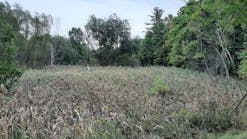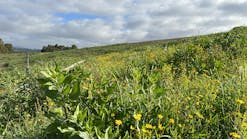Methods in Construction Site Sediment Control
In Part Two of this continuing series on the topic of sediment control methods at construction sites, author Linda Robinson discusses a highway widenting project that manages sediment and erosion control in order to protect the water quality of a nearby stream. During the widenting of the existing roadway and the installation of a new culvert system, project site managers worked to prevent construction-related debris from entering the stream as a sediment release and runoff. Continue the segment below as our author describes these best practices in sediment control.
Getting the Upper Hand on Sediment (Part 2) By Linda Robinson
When a River Runs Through It
The main reason to restrict sediment runoff at construction sites is to protect our rivers, lakes, and other waterways. But what happens when you have a river running through the site itself? That’s what James Harris, project engineer with Dement Construction, found on a recent Tennessee Department of Transportation (TDOT) project in Waynesboro, TN.
“We are widening US 64/SR 15 from a two-lane highway,” says Harris. “There is a stream-Stream 8-that is located in the roadside ditch of the existing road. The stream flowed west and went into a pipe with an additional stream-Stream 9-and flowed under the existing road.
“I really looked at it and asked myself, ‘What’s keeping the debris from the old part from washing into the new part of that stream?’ In the state of Tennessee, you can’t get as much as a stone in a stream, because its considered to be a sediment release.”
James explained the new site design. “The new construction has a box culvert going under all four lanes of the new road. The design has Stream 8 going into a 24-inch perforated pipe and connecting to a new box culvert. After installing the perforated pipe, we were left trying to figure out a permanent solution to keep any gravel bits from getting into the pipe end after we backfilled it with stone.”
That was when Harris called on one of his suppliers, Kirk England of England Erosion, Seed & Supply of Nashville, TN. England was enthusiastic about a new product that has just come out and said it would be ideal to solve the problem: the Silt-Saver Pipe Stopper developed by Roger Singleton, president of Silt-Saver Inc. in Conyers, GA. England brought the Pipe Stopper to the site, and after some measuring and discussion of objectives, James chose the open mesh design, designed to allow water to pass through easily but also to keep larger particles from entering the stream.
“The other slip-cover had a filter cloth on the bottom half to filter any sediment from entering,” Harris describes. “After we installed the perforated pipe, the Pipe Stopper just shoved right in the end of the pipe with a really snug fit.”
From what began as a rather puzzling TDOT construction project, James says he has become a rather enthusiastic user of the Pipe Stopper. “If we had used plywood, it would have rotted out at some point. If we had placed a large rock or boulder of some kind at the end of the pipe, it would have either restricted the flow or had voids to allow smaller stones to enter the stream. After using this product one time, it has made me a huge fan. I am looking to get more to have on hand in the warehouse for jobs in the future.”
The Pipe Stopper is a sediment control device designed for horizontal pipe applications. It’s specifically designed to prevent or reduce the movement of sediment into stormwater pipes during construction, according to Singleton. It has an HDPE reusable frame with “friction fingers” for attachments. Providing a snug fit, it is easily snapped in and out of a pipe opening, and the design allows it to stay in place during inlet construction, holding back sediment while allowing stormwater to pass through the filter, which was exactly what James was looking for. The filter cover, much like a shower cap, fits over the HDPE frame and helps reduce costs that are associated with pipe cleanouts





